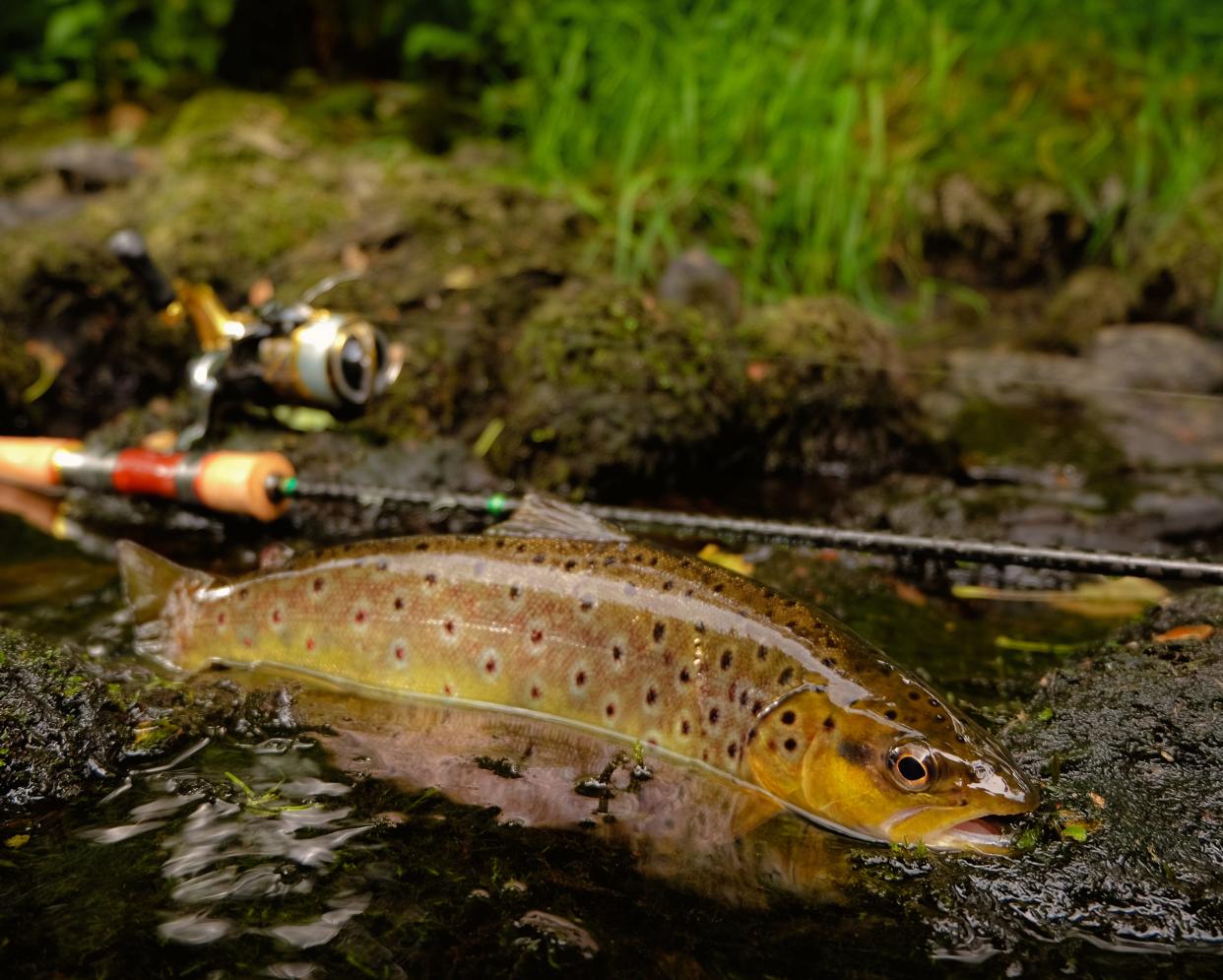As an angler, you are obligated to know fishing regulations. Here's why
Do you know what the creel limit for trout is?
The minimum length requirements?
When the season begin, and ends?
If you are an angler, you are obligated to know the fishing regulations. Why? What is the reason for those regulations – seasons, size and creel limits?
The way I understand it, they exist to preserve, protect, and enhance our fisheries, and to provide equal opportunity for their use. That seems more than reasonable.

Violate the regulations, and you could find yourself in trouble. But let’s put it in a positive light. By following the rules, you are helping to ensure the quality of sport fishing, for yourself and others, and for future generations.
New York offers incredibly rich and diverse angling opportunities, all but unmatched in this country. From minnows to muskies, bass, trout, catfish, panfish galore, from little brook trout in tiny streams to huge salmon in enormous lakes, the variety and quality of our fisheries is sensational.
This comes to mind because tomorrow (April 1) is the traditional opening day of trout season, except that there really is no opening day anymore. You can fish for trout any day of the year, with certain exceptions and limitations, such as restrictions on the use of live bait, and the need to release most fish.
It used to be that the trout regulations were extremely simple. For many decades the season opened April 1 and closed October 15, with some exceptions.
You could keep five trout. Before that it was 10 fish. And before that, I’m not sure. You’ve seen the old-time photos of 50 or 100 trout on a rope.
Now, the regulations are a bit more complicated, and, again, you are obligated to know them.
So, the general state-wide trout regulations now are:
Brook trout, in lakes and ponds: April 1-October 15, no minimum size, five per day.
Brown trout, rainbow trout, splake in lakes and ponds: All year, five per day, no more than two 12 inches or longer.
Trout in inland streams: April 1-October 15, five per days, no more than two 12 inches or longer. Oct. 16-March 31, catch and release only, artificial lures only.
That’s not too dense, but there are complications. For example, “inland trout streams” means all rivers and streams inhabited by trout except for Great Lakes, Finger Lakes and Lake Champlain tributaries to the first impassable barrier, plus tidal stream reaches.
So, Oriskany Creek is an inland stream. So are West Canada Creek and the Black River, Wiscoy Creek, the upper Genesee River, and just about everything else traditionally regarded as a trout stream.
Those waters, or parts of them, defined as “reaches” by the DEC, might have differing regulations based on the categories the Department of Environmental Conservation developed several years ago.
Those categories are Wild and Stocked (five trout, no more than two longer than 12 inches); Stocked Extended and Wild Quality (three trout, no more than one longer than 12 inches); Wild Premier (one trout, any size); and Catch and Release (all year).
How do you know which is which? The fishing regulations guide you get with your license – it also can be downloaded from the DEC’s website, or a hard copy can be requested online - will tell you. The DEC’s interactive trout map ( https://gisservices.dec.ny.gov/gis/dil/index.html?cat=WRL) also provides specific details.
An example of a stream categorized as Stocked is Oriskany Creek from a half-mile below Clark Mills to a half-mile above Deansboro. You can keep five trout there, but you also must know your business. The Oriskany from the Route 12B bridge in Oriskany Falls upstream to the Chenango Canal (and the canal itself) is categorized as Wild Premier, where the limit is just one fish of any size.
There also are Wild Quality reaches (three fish limit, no more than one longer than 12 inches) such as West Limestone Creek in Manlius and Oatka Creek in Monroe County, and Stocked Extended areas, quite a few really, that offer some great fishing, such as much of the West Canada, the upper Genesee River, and the West Branch of the Ausable River.
On top of this, year-round catch and release regulations remain on parts of many waters, including the upper Delaware River system, West Canada Creek in the Trenton Falls area, parts of Oatka Creek, the upper Genesee River, and many others.
So, you must pay attention. I haven’t killed a trout in many years, so I don’t worry about it, but I still know what the regs are where I am fishing. I’m not telling you not to keep trout, but I am telling you to know where you can and can’t keep them, and how many and how big.
Follow the regulations. It’s in the best interests of anglers and the fisheries and yours as well to follow those rules.
Write to John Pitarresi at 60 Pearl Street, New Hartford, N.Y. 13413 or jcpitarresi41@gmail.com or call him at 315-724-5266.
Notebook
Walleye netting close to completion
They have been netting walleyes all week at the Oneida Fish Culture Station in Constantia.
The work probably will be completed by the time this column reaches print, but you can still visit the hatchery, and see how the operation works. And there will be a variety of fish on display.
The hatchery is open every day and weekends through September 1, 8 a.m. to 3:30 p.m.
Expo looking for exhibitors
The inaugural Upstate NY Outdoor Expo is planned for June 8-9 at the Leonard Gilbert farm in Mohawk.
It is intended as a celebration of everything related to outdoor recreation and living. Organizers are seeking clubs and businesses that would like to participate. Email mstanley@leepub.com or call 800-218-5586 for information.
This article originally appeared on Observer-Dispatch: Outdoors column: Importance of knowing fishing regulations
